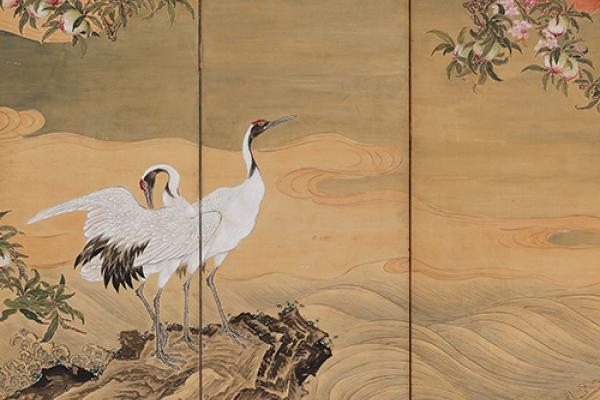
Institute for Japanese Studies and Institute for Korean Studies Joint Lecture:
Discovering 'Oriental Painting': Adaptation and Reformation of Bird-and-Flower Paintings in 1890-1920, a lecture by Misato Ido, Assistant Professor, Kyoto Institute of Technology
Abstract: Bird-and-flower paintings are a commonly appreciated genre in East Asian art. Owing to their symbolism of the auspicious, in many cases they were commissioned for special occasions such as birthdays and childbirths. In Japan many gilded folding screens and sliding doors depicting pine trees with birds and flowers were produced in the sixteenth and seventeenth centuries. The main theme of this paper is to delineate the circulation and transformation of the style and iconography of the ‘bird-and-flower paintings’ in East Asia by shedding light on the convention of copying masterpieces.
Bio: Misato Ido received her PhD from the Interdisciplinary Cultural Studies Department, University of Tokyo (2011). Her doctoral dissertation investigated the visual representations and symbolic meanings of pre-modern Japanese genre paintings. As an assistant professor at the Kyoto Institute of Technology, she researches medieval Japanese art in multimedia and international contexts, paying particular attention to folding screens and the spaces within which they were appreciated. She has been awarded a grant from the Japan Society for the Promotion of Science (2013–) to conduct a project entitled “Ritual, Space, and the Folding Screen in East Asia.”
Rivalry for Cultural Supremacy: Construction of Architectural Space and Its Representation in 19th-century Joseon Society, a lecture by Soojin Kim, Lecturer, Seoul National University
Abstract: In Joseon Korea, the ownership of villas and the commissioning of paintings of these estates were activities only for the privileged. These paintings were not only ostentatious instruments but also strategical media that embodied political messages and cultural supremacy. This talk introduces the patronage activities of two powerful families — the Andong Kim clan, one of the most influential courtier families; and the Jeonju Lee clan, the Royal Family of the Joseon Dynasty. It will elucidate the socio-cultural meaning of these families’ art patronage rivalry, and, in so doing, contribute to a more nuanced understanding of 19th century Joseon society, which as until now been limited by an unbalanced focus on political history.
Bio: Dr. Soojin Kim is a lecturer at the Department of Archeology and Art History of Seoul National University. Her field of research is visual materials of the Joseon Dynasty and their functions and meanings. In her doctoral dissertation, “The Golden Age of Folding Screens: A Study of Screen Painting in Late Joseon Korea”, she sheds light on the history of Joseon’s folding screens and their role as effective media conveying “Neo-Confucianism” and “Rule of Ritual”, two ruling ideologies of the dynasty. She was a visiting fellow at Harvard-Yenching Institute, Korea Foundation intern at the Museum of Fine Arts, Boston, and a project researcher at Kyujangkak. Currently she is conducting research for her first monograph on Confucian rituals and paintings.
This event is supported in part by OSU's Department of History of Art and by a US Department of Education Title VI grant to The Ohio State University East Asian Studies Center.
